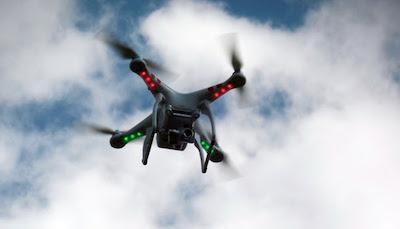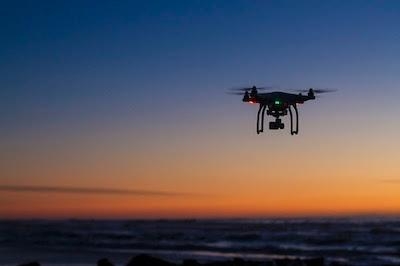Now Required To Obtain Prior Authorization From The FAA Before Flying In Controlled Airspace Around Airports
The FAA is implementing changes for recreational drone flyers mandated by Congress in the FAA Reauthorization Act of 2018.

While recreational flyers may continue to fly below 400 feet in uncontrolled airspace without specific certification or operating authority from the FAA, they are now required to obtain prior authorization from the FAA before flying in controlled airspace around airports. Furthermore, they must comply with all airspace restrictions and prohibitions when flying in controlled and uncontrolled airspace.
The new requirement to obtain an airspace authorization prior to flying a drone in controlled airspace replaces the old requirement to notify the airport operator and the airport air traffic control tower prior to flying within five miles of an airport.
Until further notice, air traffic control facilities will no longer accept requests to operate recreational drones in controlled airspace on a case-by-case basis. Instead, to enable operations under the congressionally-mandated exception for limited recreational drone operations, the FAA is granting temporary airspace authorizations to fly in certain “fixed sites” in controlled airspace throughout the country. The fixed sites are listed online and will be routinely updated.
The sites are also shown as blue dots on Unmanned Aircraft Systems Facility Maps. The maps depict the maximum altitude above ground level at which a drone may be flown safely for each location in controlled airspace.
In the future, recreational flyers will be able to obtain authorization from the FAA to fly in controlled airspace. The FAA currently has a system called the Low Altitude Authorization and Notification Capability (LAANC), which is available to non-recreational pilots who operate under the FAA’s small drone rule (PDF) (Part 107). The FAA is upgrading LAANC to allow recreational flyers to use the system. For now, however, recreational flyers who want to operate in controlled airspace may only do so at the fixed sites.

Another new provision in the 2018 Act requires recreational flyers to pass an aeronautical knowledge and safety test. They must maintain proof that they passed, and make it available to the FAA or law enforcement upon request. The FAA is currently developing a training module and test in coordination with the drone community. The test will ensure that recreational flyers have the basic aeronautical knowledge needed to fly safely.
Some requirements have not changed significantly. In addition to being able to fly without FAA authorization below 400 feet in uncontrolled airspace, recreational users must still register their drones, fly within visual line-of-sight, avoid other aircraft at all times, and be responsible for complying with all FAA airspace restrictions and prohibitions.
Additionally, recreational flyers can continue to fly without obtaining a remote pilot certificate provided they meet the eight statutory conditions of Section 349 of the Act, which are described in a Federal Register notice.
If recreational flyers do not meet any of the conditions, they could choose to operate under Part 107 with a remote pilot certification. Drone operators who fail to comply with the appropriate operating authority may be subject to FAA enforcement action.
Furthermore, flying a drone carelessly or recklessly may also result in FAA enforcement action.
The FAA will help recreational flyers learn and understand the changes by posting updates and additional guidance, including regulatory changes, on the FAA website.
(Source: FAA. Images from file)
 ANN's Daily Aero-Term (04.25.24): Airport Rotating Beacon
ANN's Daily Aero-Term (04.25.24): Airport Rotating Beacon ANN's Daily Aero-Linx (04.25.24)
ANN's Daily Aero-Linx (04.25.24) Klyde Morris (04.22.24)
Klyde Morris (04.22.24) Airborne 04.24.24: INTEGRAL E, Elixir USA, M700 RVSM
Airborne 04.24.24: INTEGRAL E, Elixir USA, M700 RVSM Airborne 04.22.24: Rotor X Worsens, Airport Fees 4 FNB?, USMC Drone Pilot
Airborne 04.22.24: Rotor X Worsens, Airport Fees 4 FNB?, USMC Drone Pilot




